Short Book Reviews
Hanna Kryszewska is a teacher, teacher trainer, trainer of trainers. She is a senior lecturer at the University of Gdańsk, Poland. She is co-author of resource books: Learner Based Teaching, OUP, Towards Teaching, Heinemann, The Standby Book, CUP, Language Activities for Teenagers, CUP, The Company Words Keep, DELTA Publishing, and a course book series for secondary schools: ForMat, Macmillan. She is also co-author of a video based teacher training course: Observing English Lessons. Hania is a Pilgrims trainer and editor of HLT Magazine. E-mail: hania.kryszewska@pilgrims.co.uk
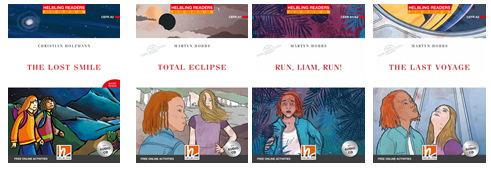
Helbling Readers Fiction. The Lost Smile. (A2) C. Holzmann. (2019) Helbling Languages. ISBN-978-3-99089-101-8, pp 32. Total Eclipse. (A1) M. Hobbs.(2020) Helbling Languages. ISBN-978-3-99089-128-5, pp 84. Run Liam, Run!(A1/A2) M. Hobbs. (2020) Helbling Languages. ISBN-978-3-99089-129-2, pp 84, The Last Voyage. (A2) M. Hobbs. (2020) Helbling Languages. ISBN-978-3-99089-130-8, pp 84. Here come some more Helbling readers in the Fiction series. Each story is a good read, pitched at the given level and has a message for the readers and promotes different values around the theme of travel. There is travel in time, travel in space, and travel in time and space. These travels involve meeting new cultures, understanding them, finding your place in them, and finally, making friends and surviving. As for the language input, the learners first become familiar with some lexis in the pre-reading tasks. Then as they read the story they can see the new words marked with a dot (and explained at the bottom of the page). They can also listen to the whole story and do some activities available on an accompanying audio CD. Finally, there are some additional after reading activities and other activities can be found at http://www.helbling-ezone.com/. The illustrations are pleasant to the eye, although to my eye they are all a bit too similar in style; but after all they have been done by the same illustrator Francesca Protopapa. However, despite this slight snag, I am sure the new titles like the other ones in the series will be popular among young learners as additional reading material and extra language practice.
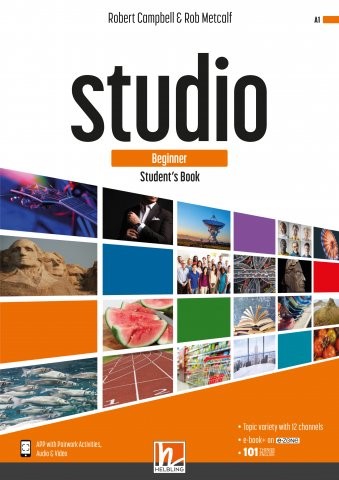
Studio Beginner. Student’s book. R. Campbell and R. Metcalf. (2019) Helbling Languages. ISBN-978-3-99045-903-84, pp 126. This course book is one in the new six level course for adult learners. At least this is what the publisher says, but, in my opinion, it would be also suitable for young adults. The book gradually develops all four language skills but offers extensive opportunities for developing listening skills through audio and video recordings. The productive skills and receptive skills are grouped together while vocabulary is introduced and recycled throughout the whole book. The course is supported by on-line resources: Studio Digital Zone (extra listening and reading, student’s workbook vocabulary practice and videos), e-online practice (cyber homework, projects and exam bank) and Helbling Media App (audio and video, pair work activities and vocabulary practice). The pie chart below sums it up really well:

This is a truly modern course making use of the potential of learning online and mobile technology; the authors and publishing house have clearly made sure of that. It is a great shame though that the course does not take on board recent developments in teaching in Europe, especially implementing mediation as defined by CEFR (2018). More information about the course at https://www.helbling.com/studio/
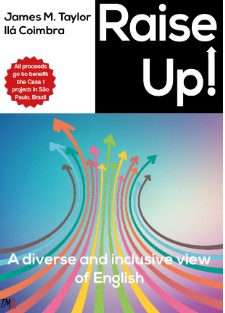
Raise Up. A diverse and inclusive view of English. James M. Taylor and Ilá Coimbra. Self-published online. (2019) pp.24. This is a truly innovative and refreshing course, or perhaps it would be better to call it resource coursebook material, which makes you believe that practising teachers can write and circulate their ideas too, not just authors recruited and approved by a publishing house… The latter don’t address issues and topics that belong to the PARSNIP group’ as if they did so the coursebook they have been commissioned to write would not travel or sell. NB.What is PARSNIP? In the words of Scott Thornbury in the book An A-Z of ELT it boils down to the following: “The sanitizing process is enshrined in the lists of taboo topics that publishers provide their writers, such as the so-called PARSNIP topics: politics, alcohol, religion, sex, narcotics, isms (such as communism or atheism), and pork. It’s this ‘parsnip policy’ that, arguably, imbues ELT books with a certain blandness – what Mario Rinvolucri once characterised as “the soft, fudgey, sub-journalistic, woman’s magaziney world of EFLese course materials - endless worthy discussions about the environment, the role of technology in life and how to have a healthy lifestyle.
‘Raise up’ is defined in the dictionary as agitate, commove, disturb, shake up, stir up, vex and these words sum up what the book / material is intended to do when it comes to the topics and the impact the lessons will have. It is to make us realise what a coursebook would look like if many teachers wrote it together and if they took on board taboo coursebook topics that are relevant to their learners like: women, BAME (Black, Asian and minority ethnic), LGBTQIA+ (Lesbian, Gay, Bisexual, Pansexual, Transgender, Genderqueer, Queer, Intersexed, Agender, Asexual, and Ally community), disabled people, the working class, indigenous people, non-conventional body types, non-hegemonic countries and cultures, refugees, people living and working in extreme conditions, non-urban environments, or the elderly.
In practice it would mean no topics or images like (after Scott Thornbury ibid.):
- mother bringing sandwiches to father as he fixes the roof
- father expressionless or relaxed in trying circumstances
- mother comforting young children
- modern Native Americans working on ranches, in menial jobs, or doing construction work
- people in Africa wearing native dress or wearing westernised version of African costumes
- Hispanic young people always working on second-hand cars
- old ladies with twenty cats
- modern Asian Americans wearing dark business suits and glasses
It is only authors or publishers who are not after money that can break stereotypes, and produce genuine materials that matter to their learners and are suitable for them as they offer diversity, the opportunity to be exposed to other cultures and identities, and opportunity to express their own meanings and culture. The lessons in Raise Up have been created for a variety of levels and are suitable for teens and adults. They are not designed to be used concurrently, rather as individual lessons chosen by the teacher for their class. The activities themselves are pretty predictable… but what matters are the topics and the content. More details and samples at:
https://theteacherjames.com/2019/04/02/raise-up/ and I understand there is more to come and you are invited to contribute, too.
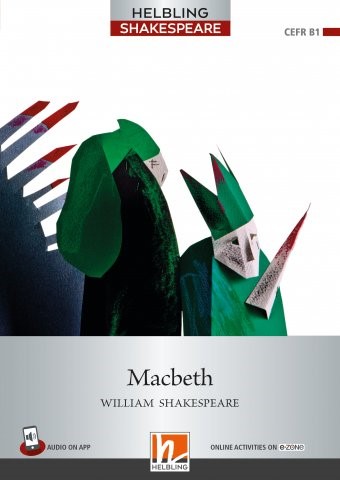
Macbeth. W. Shakespeare. Edited and activities by D. J. Ellis (2020) Helbling Languages. ISBN 978-3-99089-135-3, pp 128. This book is the third title in the new Helbling Shakespeare Series. The earlier titles are Hamlet. W. Shakespeare. Edited and activities by D. J. Ellis (2019) Helbling Languages. ISBN 978-3-99045-857-4, pp 128, and Romeo and Juliet. W. Shakespeare. Edited and activities by D. J. Ellis (2019) Helbling Languages. ISBN 978-3-99045-856-3, pp 128. (also reviewed in HLT). This new book, just like the other two titles, is also aimed at secondary and older learners of English at B1 level and above. The aim of the books is to help language learners to appreciate Shakespeare in the original, and put “Shakespeare’s words centre stage”. This is possible thanks to the fact that the editor and author of the activities has chosen short key fragments of the plays alongside a parallel modern version of the text, extensive vocabulary work, and summaries of the plot filling in the gaps between the original extracts; altogether eight of them. The scenes are not only presented in simplified/ modern English, but the learners also need to show their understanding of what is happening by, for example putting the events in the correct order, or by explaining the figures of speech Shakespeare uses. Additionally there is information of the life of Shakespeare, a timeline with the main events in his life, background information on the play and the characters, cultural background such as the history of tragedy as a genre, understanding performing a written text (From Reading to Performing section). There is also an element of testing in eight review sections and the PET Exam practice at the end of the book which test in the exam format various language skills relating to the Shakespeare play, and speaking based on visual material, mainly fine arts. This publication, like each of the other publications is introduced by Christina Klein Wolf from University of Leicester. Last not least the book is beautifully illustrated and designed; it is also supported by an app and additional content on the Helbling e-zone. Overall, highly recommended as a truly CLIL publication.
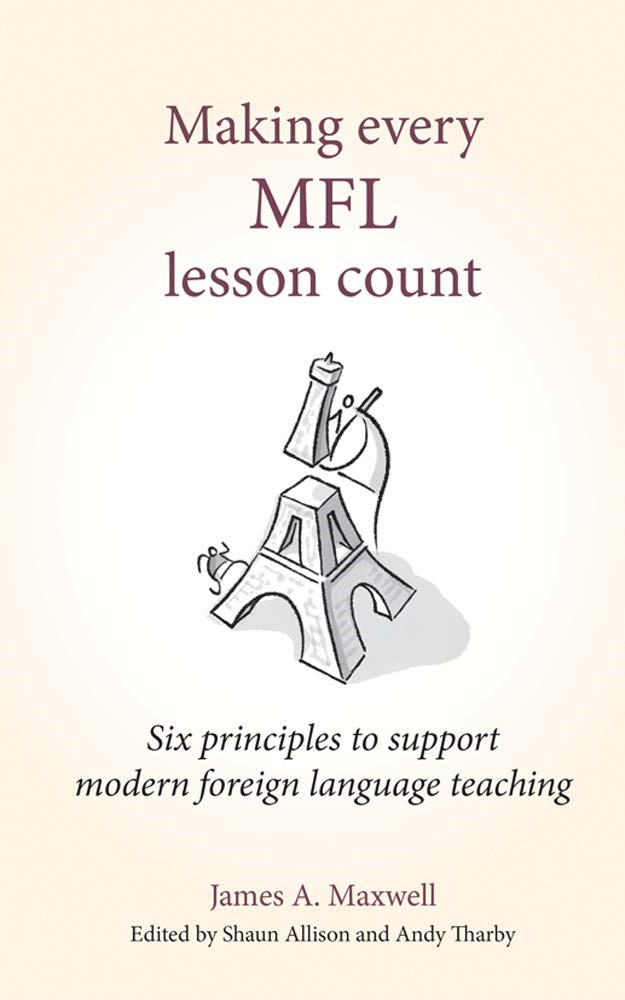
Making every MFL lesson count. Six principles to support modern foreign language teaching. J. A. Maxwell. Crown House Publishing Limited.(2109) ISBN- 978-178583396-0, pp.198. Thus book is another title in the series. The titles include among others: 1 Making every geography lesson count. Six principles to support great geography teaching. 2 Making every geography history lesson count. Six principles to support great history teaching. 3 Making every math lesson history count. Six principles to support great maths teaching (which all have been reviewed in HLTmag). This book like all the others in the series follow the success of Making Every Lesson Count so they present the same principle and are edited by the same team Shaun Allison and Andy Tharby, who have defined the six teaching and learning principles the books implement. They talk about the ‘sweet spot’ at the intersection of the three areas as represented by this Venn diagram:
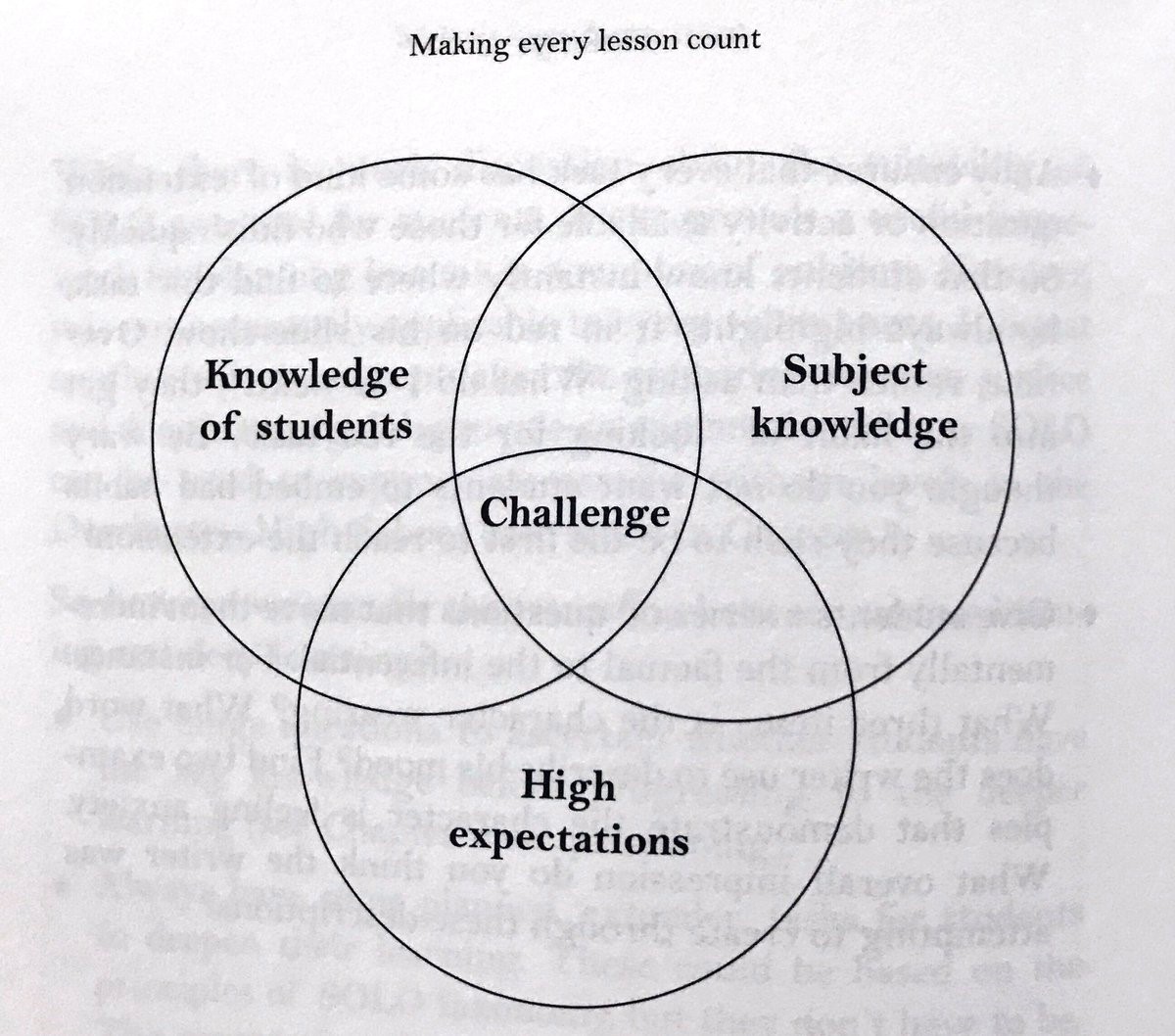
The aim of the book is to help the teachers encourage students to love learning foreign languages and excel in them. The procedure they propose are: Challenge, Explanation and Modelling, Practice, Questioning and Feedback. This approach is reflected in the division of the book into chapters and their structure. In a nutshell challenges looks at how to help students aim high, explanation helps acquire new knowledge and skills, modelling shows how to apply this new knowledge and skills, questioning offers an opportunity to think hard, deep and accurately, and finally in feedback students think about ways of further developing their knowledge and skills. Here they are represented in a diagram to show how they are interlinked and integrated.
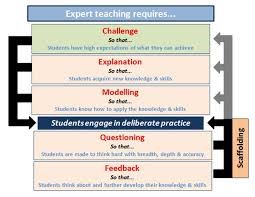
Each chapter presents a rationale for example the rationale of challenge referring to various aspects of language teaching and learning, with concrete examples of classroom practice. The book in question focuses mainly on secondary school contexts and would be of interest to teachers who teach any modern language. EFL/ELT teachers will definitely be inspired by this book, much more than by the other titles in this series. More information at
https://www.crownhouse.co.uk/publications/category/making-every-lesson-count
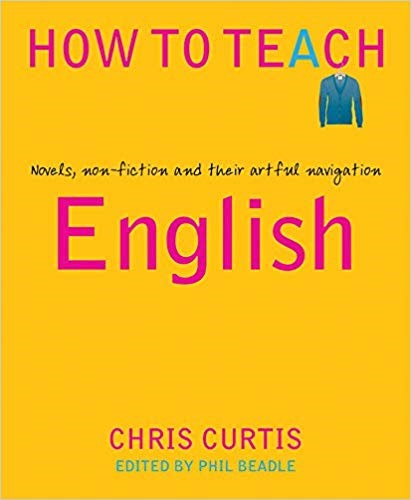
How To Teach: English: Novels, non-fiction and their artful navigation. C. Curtis. Independent Thinking Press. (2019). ISBN 978-178135312-7, pp.246. The book is part of Phil Beadle series: How to Teach… Literacy, Plenary, Secondary Science, Reading for Pleasure and Primary Maths. The book in question is aimed an English teachers who teach English at secondary level (ages 11-18) to native learners. What the author wants to achieve is bring intellectual challenge and fun into teaching literature and into teaching about literature. He wants to make his students think, appreciate language and ideas, experience, feel and react. He wants the students to learn to look critically at the society and to look at ways how they can make the surrounding world better. The texts that are used in the sample activities range from classical to modern ones. The 10 chapters in the book look art areas like appreciating poetry, teaching writing and critical thinking, teaching grammar and writing. The learners have to think about opposites, conflicts, sequencing, understanding the rationale behind actions, and logic or cause and effect underlying events. The book is very practical, refreshing and very inspiring, especially for teachers of English as a foreign language who have a different view of language, language teaching and the role of literature in language learning. A great resource for CLIL teachers,
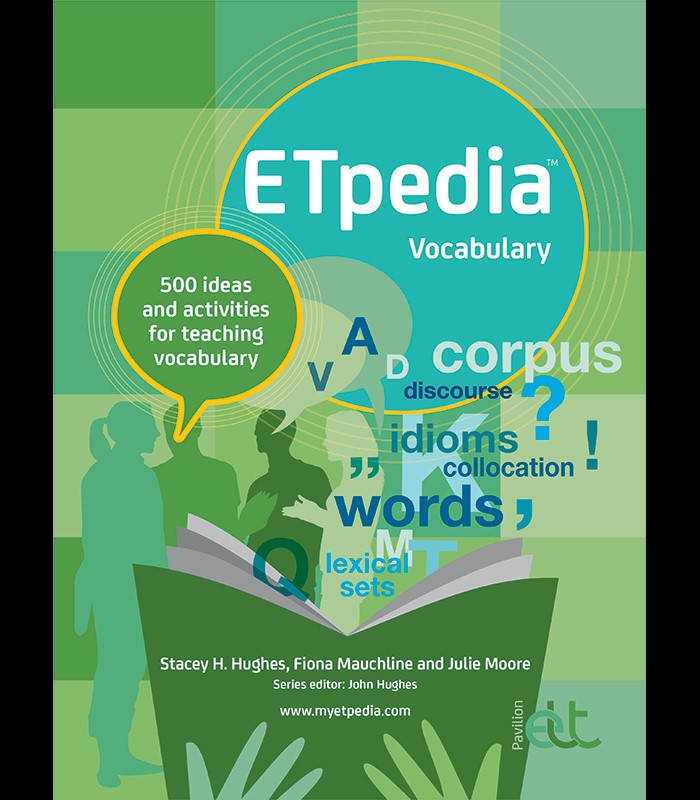
ETpedia. Vocabulary. 500 ideas for teaching vocabulary. S. H. Hughes, F. Mauchline and J. Moore (2019) Pavilion Publishing and Media. ISBN 978-1-912755264, pp 250. This book is one of the titles in the new Pavilion and Media / English Teaching Professional series called ETpedia, a series of supplementary resources which contain a wealth of teaching ideas, ready activities and useful tips. The series is growing fast and each and every title is noteworthy. One could say that this new title will be welcomed by many teachers, especially ever since grammar received separate attention in the ETpedia series. (I suppose now that there is an ETpedia publication on vocabulary, we can expect two more titles devoted to language systems, namely pronunciation and discourse.) Like the other books in the series, this book starts with an introduction giving ten reasons for using the book, ten ways to use the book and some facts about the author. The activities or tips in the book fall into 5 sections tiles: In the classroom, Features of Vocabulary, Developing Skills, Specific Contexts, and Useful Resources. Within each section there are usually ten areas concerning teaching or thinking about vocabulary, and then in turn 10 ways/ activities to address the given issue. For example, in the section on ‘Features of Vocabulary’ there are ideas for practising word form, wordbuilding, ideas to teach collocations and language chunks, how to teach idioms, phrasal verbs and register. The book is jam packed with ideas and takes on board the recent developments on thinking about lexis, like the Lexical Approach. The book also looks at lexical sets, the learners' needs depending on their age group and level, and lexical needs such as observed in delivering EAP or ESP courses. What I really find innovative, topics which I have not seen in books on teaching vocabulary include: vocabulary practice dyslexic students hate, teaching vocabulary to students who are hard of hearing, colour blind or who are partially sighted. The section on useful resources will be appreciated by all teachers who will dip into this book; they include topics like which dictionaries and websites to use, how to use them, the role of visuals in the shape of pictures, flashcards, video and realia. The appendix contains around 80 photocopiable pages, and two pages to write down more tips, this time your own ones, which you can then share on the ETpedia blog https://www.myetpedia.com/. It is a very inspiring book which will leave both novice and more experienced teachers wishing for more. However, as an editor and resource book writer, what I miss and would expect to see in such an extensive publication is a bibliography and acknowledgements where appropriate.
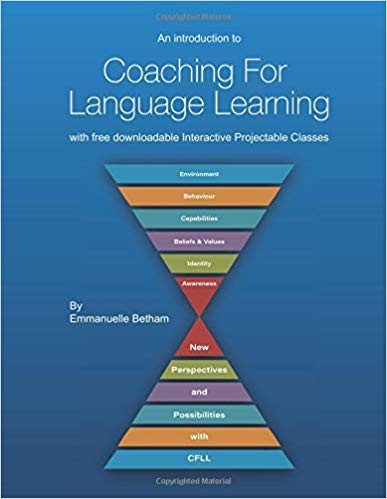
An introduction to Coaching For Language Learning. E. Betham. Self-published. (2108) ISBN-978-1791515133-2, pp 192. The book is aimed at teachers who want to develop beyond areas like how to teach grammar, or how go about testing and assessment; in other words it is aimed at teachers who have found their feet in the professions and want to develop and branch out into other areas. Coaching For Language Learning (CFLL) looks at the situation when learners do not make progress; CFLL offers solutions which are based on action research findings and address such issues as coaching seen as an innovative and lateral approach to teaching. The book is a fine introduction to coaching, and novice teachers in coaching will get a good idea what it involves. The cover of the book summarises CFLL’s main areas: environment, behaviour, capabilities, beliefs and values, identity, and awareness. As for the structure of the book it starts with presenting the concept of CFLL, the CFLL model, CFLL in practice, especially with language learning in focus: coaching and awareness, coaching and the four language skills, or coaching and communication. Then the topics go beyond language teaching and branch out into mindfulness, resilience or non-verbal communication. The book comes with downloadable ‘interactive projectable’ classes which illustrate some of the areas addressed by the book. The book is a great achievement as a self-published book, but a sharper eye may spot some editorial glitches and inconsistencies, or dislike the aesthetics and style of the design, photographs and illustrations.
Please check the Methodology and Language for Primary course at Pilgrims website.
Please check the Methodology & Language for Secondary course at Pilgrims website.
Please check the Teaching Advanced Students course at Pilgrims website.
Please check the CLIL for Secondary course at Pilgrims website.
Please check the English Language course at Pilgrims website.
Please check the English Course for Teachers and School Staff at Pilgrims website.
Please check the NLP and Coaching for the English Classroom course at Pilgrims website.
Please check the Advanced NLP and Coaching for the English Classroom course at Pilgrims website
Book Review: Creating an Inclusive School Environment
Marina Marinova, GermanyShort Book Reviews
Hania Kryszewska, PolandLeading Multimedia and Electronic Publisher Mrs Wordsmith Launches Interactive Video Game to Improve Children’s Vocabulary
Tune into English
Fergal Kavanagh, ItalyTo the Pedagogical Activists of the World